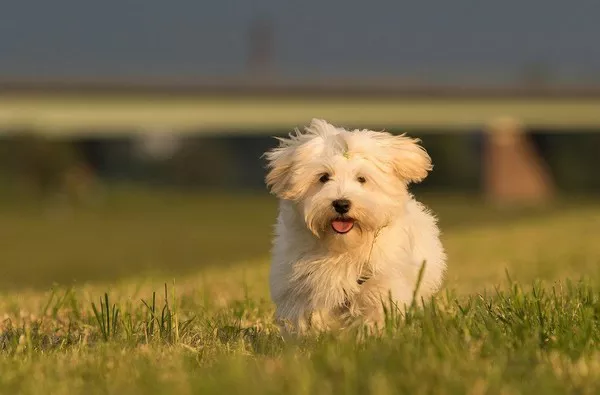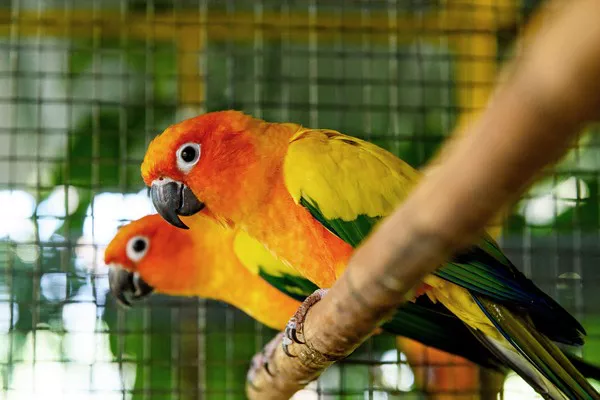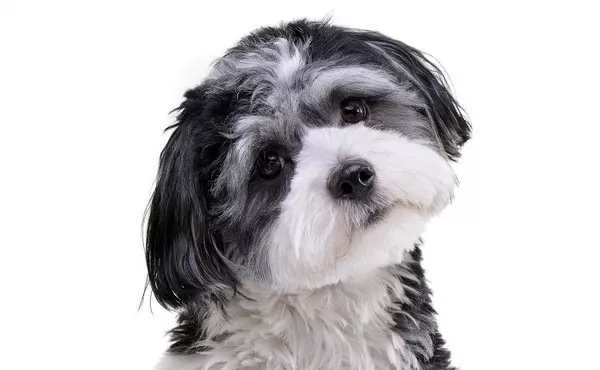Hound dogs, renowned for their incredible sense of smell, sharp instincts, and boundless energy, have a rich history as hunting companions. Whether chasing small game like rabbits or larger animals like deer, hound dogs have been essential to human survival and sport for centuries. Among the various hound breeds, some stand out for their impressive size. These giant hounds not only excel in tracking but also make affectionate companions for families and owners who can meet their exercise needs. In this article, we will explore which hound breed holds the title of the largest, examining its physical characteristics, temperament, history, and care needs.
The Hound Group: An Overview
Before diving into the specifics of the largest hound breed, it’s important to understand the Hound Group as a whole. The American Kennel Club (AKC) divides dog breeds into several categories, and one of them is the Hound Group. Hound dogs are typically classified into two main types: sighthounds and scenthounds.
Sighthounds: These dogs primarily hunt by sight and speed. They are known for their long legs, slender bodies, and sharp vision. Examples include the Greyhound and the Afghan Hound.
Scenthounds: These dogs rely on their extraordinary sense of smell to track and locate prey. Scenthounds tend to have longer ears and a more muscular build. Notable examples are the Bloodhound and the Coonhound.
Though both groups include breeds of all sizes, the largest hound dogs tend to come from the sighthound category, especially the breeds that have been developed for chasing and catching large game.
The Largest Hound Dog Breeds
When discussing the largest hound dog breeds, size typically refers to a combination of weight, height, and overall bulk. The following breeds are among the largest hounds, each with its unique traits and history.
1. Irish Wolfhound
The Irish Wolfhound is often considered the largest hound breed in terms of height. These majestic dogs have been bred for centuries in Ireland, originally to hunt large game like wolves, elk, and deer. The Irish Wolfhound is a giant among dogs, with males standing at least 32 inches tall at the shoulder, though they often exceed 35 inches. Some of the largest males can reach up to 40 inches or more.
Weight: Adult males typically weigh between 140 and 180 pounds, with females being slightly smaller at 115 to 140 pounds.
Appearance: The Irish Wolfhound’s appearance is characterized by a rough, wiry coat, long legs, and a deep chest. They are graceful despite their size, with an athletic build suited for running at high speeds.
Temperament: Despite their intimidating size, Irish Wolfhounds are gentle and friendly. They are known for being calm and patient with children, making them excellent family pets. They can also be somewhat reserved around strangers but are generally not aggressive.
Health Considerations: Due to their size, Irish Wolfhounds have a relatively short lifespan, averaging around 6 to 8 years. They are prone to certain health conditions like hip dysplasia, heart disease, and bloat, so regular veterinary check-ups are essential.
2. Great Dane
Although not traditionally classified as a “hound” in some regions, the Great Dane is frequently included in hound breed discussions due to its impressive size and hunting history. Known as the “Apollo of dogs,” the Great Dane holds the title for the tallest dog in the world, with some individuals reaching a height of 44 inches at the shoulder.
Weight: Great Danes are massive dogs, with males typically weighing between 140 and 175 pounds. Some can even surpass this weight, reaching up to 200 pounds.
Appearance: The Great Dane’s physique is characterized by its long, muscular body, large head, and strong neck. Their coat is short, smooth, and comes in a variety of colors, including fawn, brindle, blue, and black.
Temperament: Despite their imposing size, Great Danes are often described as “gentle giants.” They are affectionate, loyal, and patient with children, making them great family dogs. Great Danes are typically good-natured and social, though they can be protective of their home and loved ones.
Health Considerations: Like other giant breeds, Great Danes have a relatively short lifespan, typically around 7 to 10 years. They are prone to health issues like hip dysplasia, bloat, and heart problems. Their large size also means they need a special diet and plenty of space to move around.
3. Borzoi (Russian Wolfhound)
The Borzoi, also known as the Russian Wolfhound, is another giant sighthound that stands out due to its elegant build and impressive stature. Bred in Russia to hunt wolves and other large game, Borzois are both fast and strong.
Weight: Male Borzois typically weigh between 75 and 105 pounds, while females are usually lighter, weighing between 60 and 85 pounds.
Appearance: Borzois have a sleek, long, and narrow body, with a beautiful silky coat that gives them a graceful, almost aristocratic appearance. Their long legs and deep chest allow them to reach impressive speeds, especially when chasing prey.
Temperament: Borzois are known for being calm, quiet, and independent dogs. While they are generally affectionate with their families, they can be reserved with strangers. Due to their hunting instincts, they may not be the best choice for homes with small pets.
Health Considerations: Like many hound breeds, Borzois can be prone to certain health conditions, including hip dysplasia and heart issues. Their long coat requires regular grooming to prevent matting, especially during shedding season.
4. Saluki
The Saluki, one of the oldest known dog breeds, is a sighthound that was originally bred in the Middle East for hunting large game, including gazelle and deer. Known for their speed and agility, Salukis are somewhat smaller than the Irish Wolfhound or Great Dane but are still impressive in size and stature.
Weight: Salukis typically weigh between 40 and 60 pounds, with males being on the heavier side.
Appearance: Salukis are known for their elegant and slender build, with long, feathered ears and tails. Their coat can be either smooth or slightly wiry, and it often comes in a range of colors.
Temperament: Salukis are gentle and independent, and they can be somewhat aloof with strangers. However, they form strong bonds with their families and can be very affectionate. Like many sighthounds, they have a strong prey drive and should be supervised around smaller animals.
Health Considerations: Salukis are generally healthy dogs, but they can be prone to certain conditions like hip dysplasia and cataracts. Their coat requires regular grooming to keep it looking its best.
How to Choose the Right Large Hound Dog for You
While the Irish Wolfhound and Great Dane are often considered the largest hound breeds, choosing the right breed for you depends on your lifestyle, living situation, and the time you can dedicate to training, exercise, and health care. Here are some factors to consider:
Space Requirements
Large hound breeds like the Irish Wolfhound and Great Dane require ample space to move around. If you live in an apartment or a small house, a giant hound breed may not be the best choice. These dogs are happiest in homes with large yards where they can stretch their legs and engage in play. If you have a small living space, consider opting for a smaller breed.
Exercise Needs
Hound breeds, especially the larger ones, require significant daily exercise to maintain a healthy weight and to satisfy their instincts. Whether it’s running, walking, or playing in a secure area, large hounds need plenty of activity to burn off their energy. If you’re an active individual or family who enjoys outdoor activities, a larger hound breed could be a good match.
Temperament and Socialization
Though many large hounds are known for their calm and gentle nature, each breed has its unique temperament. Irish Wolfhounds, for instance, are known for being especially good with children, while Borzois might be more reserved. Consider how much time you can dedicate to training and socializing your dog. Early socialization is key to ensuring that your large hound is comfortable around people, children, and other animals.
Health Considerations
Giant dog breeds, including many hounds, are more prone to certain health issues, such as hip dysplasia, heart disease, and bloat. Be prepared for the possibility of higher veterinary costs and be proactive in managing their health through regular check-ups, exercise, and proper nutrition. Additionally, because of their size, larger hounds may not live as long as smaller breeds, so it’s important to consider their lifespan and the care they will need in their senior years.
Conclusion
The Irish Wolfhound is widely recognized as the largest hound breed in terms of height, with some individuals reaching impressive heights of over 40 inches at the shoulder. However, the Great Dane, while not always categorized as a hound, also rivals the Irish Wolfhound in terms of sheer size and weight, with some individuals reaching up to 200 pounds. Other giant hound breeds, like the Borzoi and Saluki, may not be quite as large, but they still stand out for their strength, speed, and elegance.
Choosing the right large hound dog breed requires careful consideration of your lifestyle, living space, and willingness to meet the physical and emotional needs of these majestic dogs. Though they may come with certain challenges, particularly in terms of health care and exercise needs, the loyalty, intelligence, and affection of these magnificent hounds make them some of the most rewarding companions.
Whether you opt for the towering Irish Wolfhound or the dignified Borzoi, a large hound dog can bring joy, companionship, and a sense of awe into your life.
Related Topics:




















